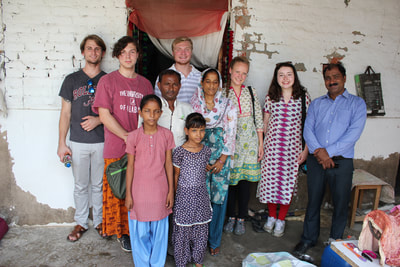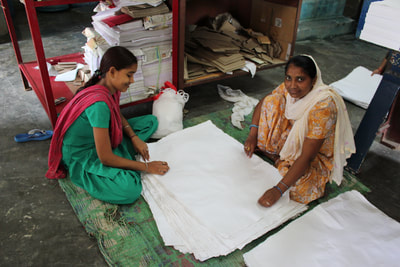Migrant Workers: 4th Segment of Poverty
The next step towards urban migration is becoming a migrant worker. Migrants move from rural areas to urban centers in search of work. They often move across state lines in search of opportunities for a better livelihood. Because languages and culture change from region to region, they often find themselves in a completely different environment. They find work as drivers, construction workers, agricultural laborers or domestic helpers. They often face exploitation and have inadequate living conditions; however, the higher salaries combined with the lack of opportunities in rural villages fuels the influx of migrant workers. Migrant worker communities are transitory, so each trip typically visits new communities and families.
Field Visits - Summers of 2015, 2016, and 2017

In 2015, students visited Gurgaon, a city outside of Delhi.
In Gurgaon, students visited a non-profit that provides education to children from the migrant communities. They also had a job-training program and employed local women to make handicrafts to sell to corporate partners in other countries. Students broke into groups to visit the homes of the families. These families struggle to make ends meet, but they are hopeful for their children and value their education. They face many struggles related to their existence outside the system. Since they are migrants, they are often not registered in the state so they cannot receive government subsidies.
In 2016 and 2017, students visited migrant communities in Chennai.
Students on the 2017 trip met with a man who had migrated to a town outside Chennai, hoping to get a job as a construction laborer in the Middle East. Cities like Dubai hire migrant workers from Southeast Asia because their own populations are small and often unwilling to work those jobs. While there have been many reports of exploitation of migrant workers on these large construction projects, students were interested to hear the other side of the story - why migrant workers from Southeast Asia accept these jobs.
In Gurgaon, students visited a non-profit that provides education to children from the migrant communities. They also had a job-training program and employed local women to make handicrafts to sell to corporate partners in other countries. Students broke into groups to visit the homes of the families. These families struggle to make ends meet, but they are hopeful for their children and value their education. They face many struggles related to their existence outside the system. Since they are migrants, they are often not registered in the state so they cannot receive government subsidies.
In 2016 and 2017, students visited migrant communities in Chennai.
Students on the 2017 trip met with a man who had migrated to a town outside Chennai, hoping to get a job as a construction laborer in the Middle East. Cities like Dubai hire migrant workers from Southeast Asia because their own populations are small and often unwilling to work those jobs. While there have been many reports of exploitation of migrant workers on these large construction projects, students were interested to hear the other side of the story - why migrant workers from Southeast Asia accept these jobs.










